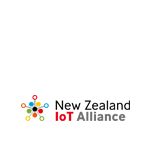Earlier in the month, students of Hutt Valley High School staged a protest as unsafe levels of toxic mould – discovered in their C Block classrooms, now slated for demolition – forced students back to remote learning.
Fortunately we can consider this to be an extreme example, however, it is worth noting that air quality has scope for harm to our tamariki (children) with conditions far less extreme, or obvious. A fact recognised in Te Rautaki Rawa Kura (The School Property Strategy) from the Ministry of Education (MoE), setting the approach running up to 2030.
When classroom Carbon Dioxide (CO2) levels get too high, drowsiness, impaired decision-making ability, and headaches result. Over an extended period more frequent illness has been associated. NZS 4303:1990 suggests ventilation installed should result in CO2 levels below 1,000 parts per million (ppm) and MoE guidelines say new buildings must not exceed 1,500 ppm on average.
Great, but what about the classrooms we already have? Studies such as Massey University’s ‘SKOMOBO’ found some classrooms in Christchurch reach 2,800 ppm in winter and another tested at 3,800 ppm in autumn. Hawke’s Bay saw averages over summer around 2,000 ppm. Auckland fared better in the classes tested but still saw classes at 1,500 ppm for much of the day in winter.
These levels are not considered enough to cause long-term negative health impacts – but even at 1,000 ppm there is a statistically significant reduction in ability to make decisions and concentrate, which increases in severity as levels rise. We need to be mindful of the potential impacts on the quality of education our tamariki receive and do what we can to mitigate them.
This goes beyond just CO2 though – temperature impacts ability to concentrate. Relative humidity should be kept between 30-60%. Particulate Matter in the air needs to be kept to a minimum to avoid exacerbating respiratory conditions.
Fortunately, these are all things mature IoT solutions exist for. It is an area IoT excels in, and with it kaiako (teachers) and schools can gain the necessary insight to act – be it to simply open a window, or to improve ventilation of rooms that are not quite up to standard yet.
Ngā mihi, The team at the NZ IoT Alliance
To receive our full newsletter including additional industry updates and information, subscribe now






